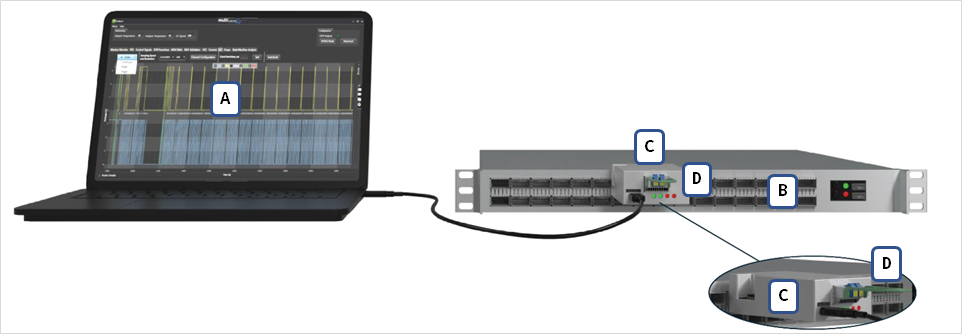Among the various components that make up optical transmission networks, one of the areas that undergoes the most rapid changes is the optical transceiver module. Until now, many form factors have been created and then weeded out. Recently, the need for broadband is increasing in data center sites, and it is expected that this will expand further to 1.6T in addition to 400G and 800G.
As the number of transmission standards increases, new SFF (*1) and CMIS (*2) standards are adopted. The availability of this wide variety of SFF/CMIS specifications increases the number of register types, which means that developers have more items to check during CMIS testing. MultiLane's SFF/CMIS debugging tool "Nexus Analyzer", which can fulfill the three roles of MCB, Loopback, and Analyzer, comes in handy in situations like this where verification becomes more complicated and time-consuming. In this article, we will explain in detail how Nexus Analyzer is useful and how to operate it.
(*1) SFF:Small Form Factor
(*2) CMIS:Common Management Interface Specification
First of all, what is Nexus Analyzer?
This is an SFF/CMIS debugging tool. By connecting between the host and module, it is possible to evaluate the host and module and read I2C signals.
The currently supported form factors are as follows.
・OSFP
・QSFP-DD
Features of Nexus Analyzer
1. An excellent product that performs three functions in one device
One unit can fulfill the roles of MCB, Loopback, and Analyzer.
2. Provides user-friendly GUI
A GUI that is easy to operate intuitively is provided.
3. Low-speed signals can be controlled externally
There is no need to start up a GUI, and low-speed signals can be controlled smoothly.
Nexus Analyzer appearance
➀Dip switch
Select internal control or external control
➁Pin header
Interface for external control
③USB port
PC connection port for using GUI
④LED
Displays low speed signal status and alarms
Connection image diagram when using

A. GUI
B. Host device
C. Nexus Analyzer
D. Module equipment
Operations on the GUI
FAQ
Q. Can the main signal pass between the host and the module via Nexus Analyzer?
A. Communication is possible if you set it to Bypass mode.
Q. It says that it supports up to 30W modules, but what is the operating temperature range? Also, can it be used without a heat dissipation environment?
A. The temperature range is 0~85℃, so we recommend using it in a heat-radiating environment.
Q. Please tell me when other form factors will be released.
A. QSFP-DD is scheduled to be released after late October 2023, and QSFP and SFP are scheduled to be released after 2024.
Q. Is the GUI on the MultiLane homepage free to use?
A. To actually use the GUI, you need to pay a license fee.
Q. Regarding the range of supported pages, is it possible to check register items including CCMIS:30h and later? Also, do you have any plans to expand in the future?
A. We plan to support C-CMIS.
Q. Is it possible to select banks in MSA Table and MSA Validation?
A. Bank selection is not possible.
Q. Are there any plans to implement vendor pin?
A. Since this product is a debugging tool for CMIS implementation, there are currently no plans to implement vendor pins. If you only need pin access and an analyzer, please consider the ML4066.


